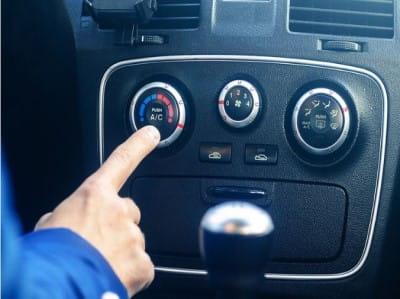
Carpooling: Benefits and Getting Started
In today’s fast-paced world, the daily commute from suburban areas to bustling city centers has become more than just a journey—it's a significant part of our daily lives. With increasing urban traffic, soaring fuel prices, and the ever-present concern for our environmental footprint, it's time to rethink how we travel. This is where carpooling comes into play, offering a practical, economical, and eco-friendly solution.
In this article, we will dive into the concept of modern carpooling—what it is, why it’s becoming increasingly important for suburban commuters, and most importantly, how you can start reaping its benefits. We aim to debunk common misconceptions, shed light on the economic and environmental advantages, and provide you with practical tips to kickstart your carpooling journey. So, whether you're a seasoned carpooler or just considering the idea, this guide is tailored to help make your daily commute more enjoyable, affordable, and sustainable. Let’s embark on this journey together and explore how carpooling can transform your travel experience.
What is Modern Carpooling?
Definition and Evolution of Carpooling
Carpooling, at its core, is a simple concept: it involves two or more people sharing a ride to a similar or the same destination. This practice, which began as a way to save on gas during wartime shortages, has evolved into a smart strategy to combat modern commuting challenges. Today, carpooling is not just about saving fuel; it's about efficient travel, reducing traffic congestion, and fostering a sense of community.
Misconceptions vs. Realities of Modern Carpooling
There are some common misconceptions about carpooling that might deter people from trying it out. Some think it's inconvenient, restrictive, or that it hardly makes a difference. However, the reality is quite different. Modern carpooling offers flexibility and a variety of options to suit different schedules and routes. Plus, with each carpooling arrangement, there's a significant reduction in the number of vehicles on the road, leading to less traffic and pollution.
The Role of Technology in Facilitating Carpooling Today
Technology has revolutionized carpooling, making it more accessible and efficient than ever before. With the advent of carpool apps and social media groups, finding someone to share your ride with is just a few clicks away. These platforms allow for real-time coordination, route optimization, and even cost-sharing arrangements. This technological leap has transformed carpooling from a logistical challenge to a convenient and flexible commuting option.
Modern carpooling is an evolved practice, shattering old stereotypes and leveraging technology to offer a convenient, eco-friendly, and cost-effective solution for daily commuters. As we move forward, embracing carpooling can significantly impact our wallets, our time, and our planet.
Why Carpooling is Essential for Suburban Commuters
Economic Benefits:
Reducing Individual Fuel Costs and Car Maintenance Expenses
Carpooling can be a game-changer for your wallet. When you share rides, you're not just splitting fuel costs; you're also reducing the wear and tear on your vehicle. This means fewer trips to the mechanic and more money saved in the long run. For suburban commuters, who often face longer distances, these savings can quickly add up, making carpooling an economically smart choice.
Impact on Insurance Rates and AAA Discounts
Another financial perk of carpooling is the potential impact on your car insurance rates. Some insurers offer discounts to drivers who carpool, recognizing the reduced risk and vehicle usage. Additionally, as a AAA member, you may have access to exclusive discounts and benefits that complement your carpooling lifestyle, enhancing the overall economic advantage.
Environmental Impact:
Reducing Carbon Emissions and Traffic Congestion
One of the most significant impacts of carpooling is on the environment. By sharing rides, the number of cars on the road decreases, which directly reduces carbon emissions and traffic congestion. This not only contributes to cleaner air but also a smoother commute for everyone.
Broader Environmental Benefits for Urban and Suburban Areas
The environmental benefits of carpooling extend beyond just reducing emissions. Less traffic means fewer road repairs and a lower need for expanding road infrastructures. This helps preserve green spaces in both urban and suburban areas, contributing to a healthier and more sustainable environment.
Social and Community Benefits:
Networking, Building Relationships, and Community Engagement
Carpooling opens up opportunities to connect with colleagues and neighbors, turning commute time into a chance to network and socialize. This can lead to stronger community bonds and a more enjoyable daily routine.
Mental Health Benefits: Reducing the Stress of Commuting
Commuting can be a significant source of daily stress, but carpooling can help alleviate this. Sharing the drive allows you to relax as a passenger, engage in conversation, or simply enjoy the company, making the journey more pleasant and less taxing.
AAA’s Support for Carpooling Initiatives
Roadside Assistance and Other Relevant Services
AAA recognizes the importance of carpooling and offers support to make it as convenient and safe as possible. This includes reliable roadside assistance if you encounter any issues during your commute. Knowing that help is just a call away adds peace of mind to your carpooling experience.
Carpooling presents numerous benefits for suburban commuters, from significant economic savings and environmental impact reduction to enhancing social connections and improving mental health. With the support of organizations like AAA, carpooling becomes not just a practical choice, but a smart, responsible, and enjoyable way to travel.
How to Get Started with Carpooling
Step-by-Step Guide to Organizing a Carpool
1. Gathering Interest
Start a Conversation: Initiate discussions with your colleagues, neighbors, or friends who share a similar route. Use office email lists, social media, or community bulletin boards to reach out.
Information Session: Consider organizing a brief meeting or an informal get-together to discuss carpooling logistics and gauge interest.
2. Establishing the Carpool Group
Create a Group List: Once you've found interested individuals, compile a list of names, contact information, and preferred routes.
Meet and Greet: Organize a face-to-face meeting with potential carpoolers. This helps in building trust and comfort among the group.
3. Scheduling and Route Planning
Availability and Routes: Collect information about each member’s work hours and preferred pickup/drop-off points.
Route Optimization: Use mapping tools to determine the most efficient route. Consider traffic patterns and the convenience of pickup/drop-off locations.
4. Setting Up Communication Channels
Choose a Platform: Select a communication platform that is accessible to all members, like a WhatsApp group, email chain, or a specialized carpooling app.
Regular Updates: Encourage members to regularly update the group about their schedules, any changes in availability, or if they're running late.
5. Financial Arrangements
Cost Sharing: Discuss and agree on how costs like fuel and tolls will be shared. Options include splitting costs per trip, weekly, or monthly.
Payment Methods: Decide on how payments will be made – cash, digital payments, etc. Ensure transparency in the sharing of costs.
6. Establishing Carpool Etiquette
Rules and Preferences: Agree on carpool etiquette such as punctuality, food and drink policies, smoking, music or radio preferences, and conversation limits.
Rotation Schedule: If multiple people are willing to drive, set up a rotation schedule. This helps in distributing driving responsibilities fairly.
7. Emergency Plans and Backups
Emergency Contacts: Exchange emergency contact information for unforeseen circumstances.
Backup Plans: Have a plan for situations like vehicle breakdowns, unexpected driver absences, or extreme weather conditions. Discuss how AAA services can be integrated for roadside assistance.
8. Trial Period
Start with a Trial: Begin with a short-term trial period to allow members to experience and adjust to the carpool without long-term commitment.
Feedback and Adjustment: After the trial period, gather feedback from all members and make adjustments as needed. This could involve changing routes, timings, or even members.
Tips for a Successful Carpool
Establishing Rules
Punctuality: Emphasize the importance of being on time. Set a grace period (e.g., 5-10 minutes) after which the carpool will leave without the late member.
Driving Responsibilities: If multiple members are driving, establish a clear rotation schedule. Also, decide how to handle situations like a driver feeling unwell or a car needing repairs.
Music and Noise Levels: Reach a consensus on in-car entertainment. Maybe create a shared playlist or agree on a radio station. Respect preferences for quieter rides, especially early in the morning.
Car Maintenance and Cleanliness: Set guidelines for keeping the car clean and well-maintained. This includes regular servicing, cleaning the interior, and ensuring the car is comfortable for all passengers.
Handling Delays and Absences
Communication Protocol: Agree on a method for notifying the group of delays or absences. A group text chat is an effective solution, as it's universally accessible and not reliant on any app that could go out of business or start charging.
Backup Drivers: Have a list of alternate drivers who can step in if the primary driver is unavailable. Make sure these backups are aware of the route and schedule.
Plan for Last-Minute Changes: Develop a quick-response plan for unexpected changes. This could involve a temporary shift in pick-up times or a different meeting point.
Comfort and Safety
Vehicle Choice: Ensure the vehicle used is appropriate for the number of people in the carpool. It should be reliable, comfortable, and spacious enough to accommodate all passengers and their belongings.
Driving Habits: Encourage safe driving practices. Discuss and agree on things like speed limits, driving style, and adherence to traffic rules.
Health Guidelines: Especially relevant in times of health crises, set rules regarding mask-wearing, hand hygiene, and what to do if someone is feeling unwell. Keep sanitizers or wipes in the car for added safety.
Personal Space and Boundaries: Recognize and respect personal boundaries. This includes avoiding overly personal topics, respecting each other's privacy, and being considerate of each other’s comfort levels.
AAA Resources and Support
Roadside Assistance, Travel Planning Tools, and Relevant Discounts
AAA offers a range of resources that can assist your carpooling efforts. Their roadside assistance can be a lifesaver in case of any vehicle trouble. Additionally, AAA's travel planning tools and exclusive discounts can add value to your carpooling experience.
Contacting AAA for Additional Support and Information
For more information on how AAA can support your carpooling journey, visit cluballiance.aaa.com. Whether it's for planning your route, finding discounts, or ensuring on-the-road safety, AAA has got you covered.
Conclusion
Carpooling is a smart, environmentally friendly, and cost-effective way to commute. It's about more than just sharing a ride; it's about building a small community on the move, reducing your carbon footprint, and easing the stress of daily travel. So, why not take the first step? Reach out to your colleagues, organize your carpool, and start enjoying a smarter, more enjoyable commute today. With the support of AAA and the right planning, your carpooling experience can be both rewarding and fun.
This article was created in partnership with AI using the GPT-4-V model from OpenAI and reviewed by a human reviewer.







